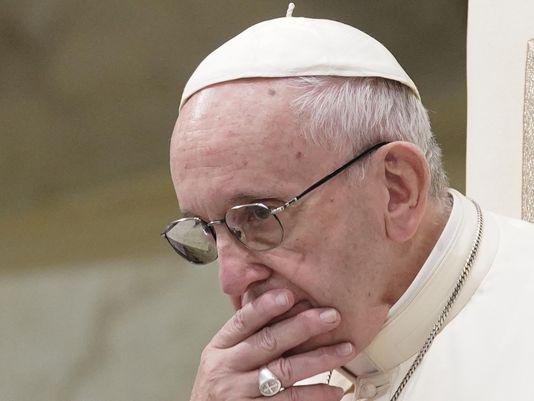|
EDITORIAL: Silver lining in Pa. priests report
York Dispatch
[with video] It’s been more than four months since Pennsylvania Attorney General Josh Shapiro released a stunning grand jury report that documented decades of abusive behavior against children by Catholic priests. The allegations were astounding: An estimated 300 assailants were alleged to have accosted more than a thousand young victims over a span of some 60 years. Seemingly no part of the state, including York County, was left unscathed. Even decades into the ongoing shame that is the Roman Catholic Church’s continued failure to adequately acknowledge and atone for the sins of its fathers, the details of the 1,356-page report were shocking. They have also been motivating. As the Associated Press reported last week, churches across the country have followed Pennsylvania’s lead and are engaged in what the story called “an unprecedented public reckoning.” According to the report: “Nearly 50 dioceses and religious orders have publicly identified child-molesting priests in the wake of the Pennsylvania report issued in mid-August, and 55 more have announced plans to do the same over the next few months, the AP found.” The numbers continue to astonish:
That there is still so much information left undisclosed more than 15 years after the scandal first erupted in Boston demonstrates anew how slow and secretive the church has been in owning up to the dual problems of predatory priests and an internal structure that sought to shield them. But even now, with the statute of limitations passed in many cases and/or the identified assailants gone to their graves, victims’ advocates say the public reckoning provides a much-needed sense of vindication after decades of stonewalling and silence. And it may provide something else: Momentum for victims’ compensation funds. That’s been the case in Pennsylvania, where the church announced one such fund in November. Such funds may furnish a small modicum of consolation to victims who, in many cases, have suffered in silence for decades. That’s especially important given that states, including Pennsylvania, have been slow to pass legislation extending the statute of limitations for such crimes or allowing victims to seek legal redress regardless of how far back an incident of abuse occurred. Seeking to make victims whole is just one aspect of the ongoing scandal, of course. Pope Francis himself last week acknowledged in a letter to Roman Catholic bishops attending a prayer retreat near Chicago that the issue is undermining the church’s integrity. “The Church’s credibility has been seriously undercut and diminished by these sins and crimes, but even more by the efforts made to deny or conceal them,” the pope wrote. Still, such concerns were not reflected in the Vatican’s move this past November to prevent U.S. bishops from taking steps to respond to the crisis. And word last week that an Argentine bishop within the Holy See itself is under investigation following allegations of sexual abuse and misconduct further erodes public confidence. With the issue still simmering, even at the highest reaches of the Catholic church, is it all the more vital that local dioceses continue to follow Pennsylvania’s lead in investigating and identifying abusive clergy. The state’s landmark grand jury report pulled back the curtain on a church structure that long placed the protection of its own abusive priests over the physical, mental and spiritual well-being of its flock. It is a painful episode in state history and may yet be an all-but-fatal ordeal for the Catholic church. But if there is a silver lining to this dark chapter it is the many dioceses across the nation that, using Pennsylvania as an example, have begun to earnestly, albeit belatedly, bring these dark deeds and their perpetrators to light. And by doing so, bring a modicum of solace into the lives of the victims.
|
.
Any original material on these pages is copyright © BishopAccountability.org 2004. Reproduce freely with attribution.
